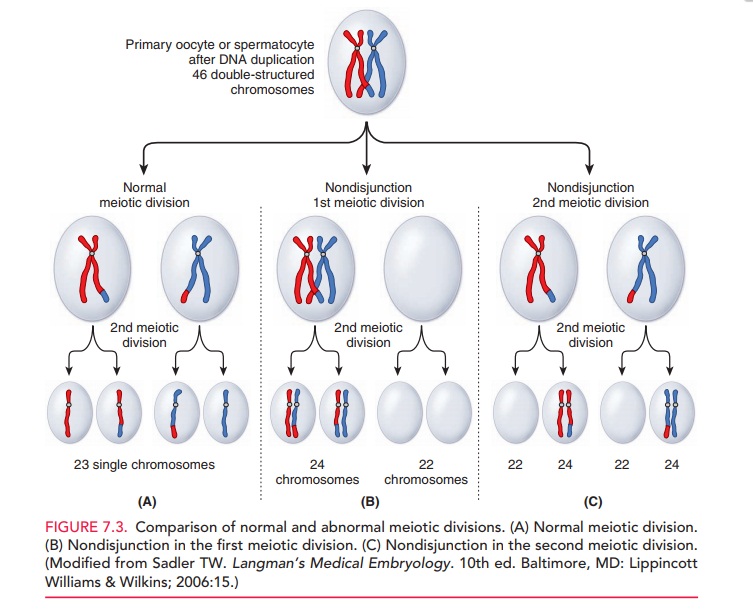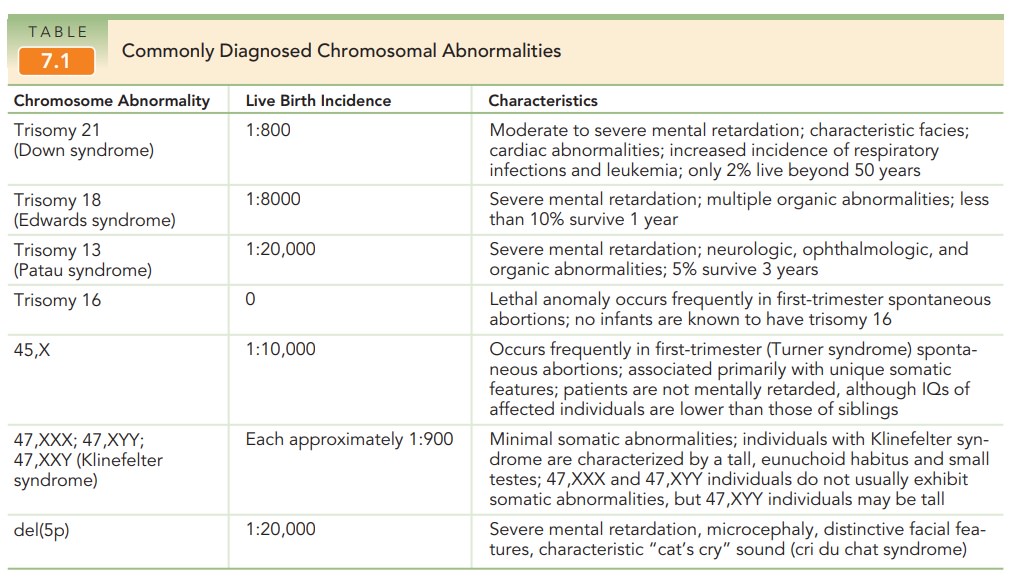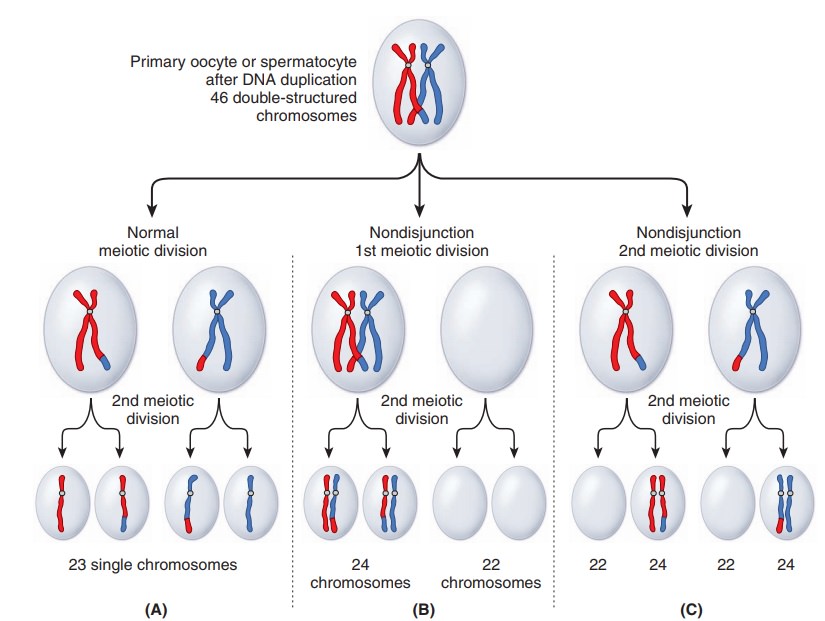Chapter: Obstetrics and Gynecology: Assessment of Genetic Disorders in Obstetrics and Gynecology
Abnormalities in Chromosome Number

ABNORMALITIES IN CHROMOSOME NUMBER
Any alteration in the chromosome number is called heteroploidy.Heteroploidy can occur in two forms: euploidy and ane-uploidy. In euploidy, the haploid number of 23 chromo-somes is altered. An example of euploidy is triploidy, in which the haploid number has been multiplied by 3. The karyotype is 69,XXX or 69,XXY. Triploidy results from double fertilization of a normal haploid egg or from fer-tilization by a diploid sperm. Such abnormalities usually result in conceptions of partial hydatidiform moles and end spontaneously in the first trimester.
In aneuploidy, the diploid number of 46 chromo-somes is altered. The trisomies are aneuploidies in which
there are three copies of an autosome instead of two. Examples include trisomy 21 (Down syndrome) trisomy18
(Edward syndrome) trisomy 13 (Patau syndrome), and trisomy 16. Most trisomies result from maternal meiotic
nondisjunction, a phenomenon that occurs more frequently as a woman ages (Fig.
7.3 and Table 7.1).

Sex chromosome abnormalities
occur in 1 of every 1000 births. The most common are 45,X; 47,XXY; 47,XXX;
47,XYY; and mosaicism (the presence of 2 or more cell populations with
different karyotypes). Numeric sex chromosome abnormalities can result from
either maternal or paternal nondisjunction.


Related Topics